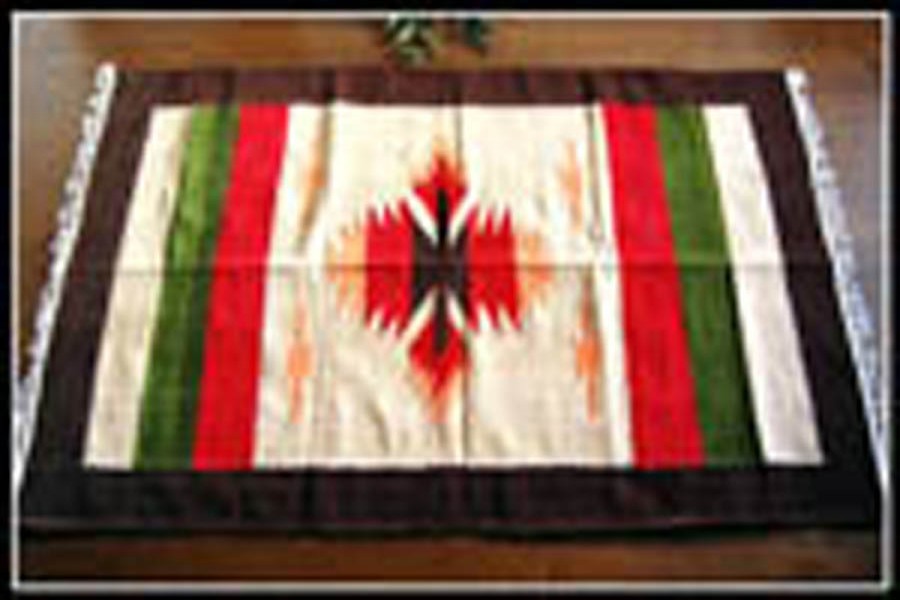RANGPUR, Mar 23: The demand for shatranji (handcrafted rug) is growing day by day, as it has drawn global attention.
The traditional manually woven carpet, a heritage of Rangpur, has a glorious history. This thick-knit carpet was popular across the sub-continent in the Mughal days. The craft expanded to this region in the thirteenth century.
The rulers of the period showed fondness to the rugs for their majestic beauty and appeal. Shatranjis of this area were popular in the Mughal era. Emperor Akbar used the item to adorn his palace in New Delhi.
During the British period the colourful rug was manufactured in village Pirpur on the outskirts of the town. In 1830 district collector of Rangpur Mr Nishbet picked up a fascination for Shatranji. He arranged government support for the weavers.
Later the villagers named the village Nishbetganj after him. With the passage of time, partition of the sub-continent, political unrest and technological advancement the craft was almost on the verge of extinction. Many lost employment and left the craft for alternative sources of income.
Shafiqul Alam, a young entrepreneur came forward to revive the lost craft. He set up a show room "Karupanno" in the town in 1987.
At the outset he engaged only five weavers to knit the rugs to sell those at his shop. His efforts led to the revival of shatranji. He set up a cottage industry at Nishbetganj and a showroom at Shukrabad in Dhaka, engaging some 1000 workers.
"We succeeded in popularising the craft in the country after a hard struggle. It has a huge demand in the global market. The government can patronise the private sectors to set up craft industry in the region in a large scale," Mr Shafiq said.
The Rangpur Dinajpur Rural Service (RDRS), Bangladesh, a non government organisation, started patronising the craft creating job opportunities for thousands of extreme poor in the northern districts. Shatranji is now knitted with new designs and techniques adding to its aesthetic beauty.
A large number of weavers, mainly vulnerable women are working in the rug-making units of the NGO presently and are now producing colourful floor rugs, door mats, prayer mats, wall mats, table mats which have drawn the attention of the buyers.
Shatranji is regaining its magnificent past. It is a measure of great success that it has crossed the country's border. Large scale industries could be set up in the northern districts to increase the export volume of these rugs, said Mosaddek Hossain Bablu, former president of Rangpur Chamber of Commerce and Industry.
[email protected]

- Friday, 10 January 2025 |
- Today's FE |
- e-Paper |
- Beta Website

